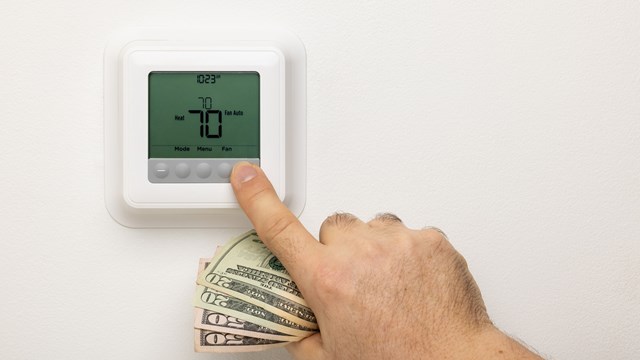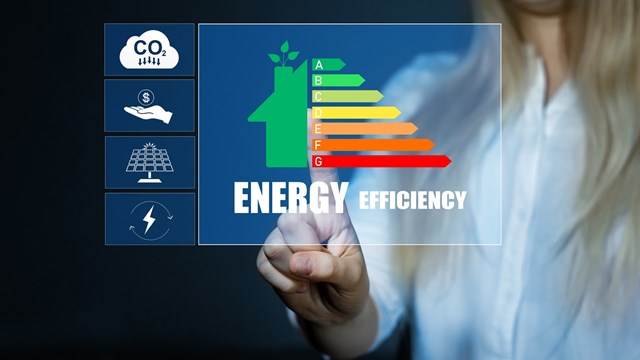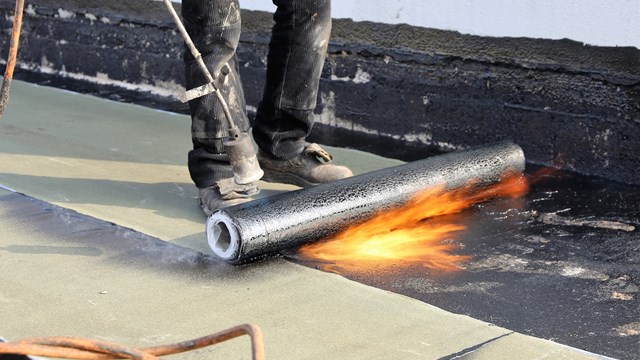
As gasoline prices rise with increasing summer demand, American thoughts focus sharply on the cost of energy and ways to trim fat from their overall energy budgets. Yet for the nation’s nearly sixty million condo dwellers, considering newer energy-saving options can be a tricky proposition at best. While some condos or co-ops move rapidly to adopt the latest green technologies, many associations, still governed by documents drafted decades in the past, may be burdened with legal language that expressly prohibits their communities from making a variety of environmentally-friendly updates. However, recent changes in the law are now eliminating many of the prohibitions that condos and HOAs had on the books.
How Green Can You Go?
“I think what you’re seeing is just the beginning of those types of questions arising for [condo] associations,” says Mitchell Frumkin, RS, PE, CGP, president of Kipcon, Inc., a New Jersey-based engineering and consulting firm that provides condo reserve and transition studies. “As we go into the future, and people are looking more at the sustainable options such as solar panels, you’re going to see more of that because it’s affecting the common elements of the community.”
1.) Know your rules and governing documents.
The problem, experts note, arise from the unique legal aspects of a condo community or HOA. In apartment buildings and similar forms of high-density housing, property ownership is clearly defined through the traditional landlord/tenant relationship. Not so with condo properties, and many experienced managers can speak to the unusual ownership questions that sometimes arise. Governing documents are where the details of what can and can't be done by the condo or co-op board, and what can and can't be done by the individual unit owner. "An example would be solar covenants," says Shari Shapiro, a Cherry Hill-based associate in the Energy, Environment & Public Utilities practice of the law firm of Cozen O'Connor. "In some cases, condo or homeowner associations prohibit solar arrays."
If a condo or co-op decides that they'd like to invest in solar panels as a way for the building to "go green," the board will have to closely examine the details of the governing documents to ascertain whose approvals need to be obtained in order to move the project forward.
"Governing documents may prohibit alterations to the roofs of a condominium building, townhouse or freestanding dwelling," says Jeffrey S. Paige, Esq. of the Cutolo Law Firm in Manalapan. “In the case of townhouses, where the roof would typically be part of the common elements, the association itself is unlikely to cover the cost of installation of solar panels since most electricity is separately metered and paid by individual unit owners—not the association. In some cases though, the governing documents’ prohibitions on solar panels are nothing more than paper tigers."
“Generally when [condo boards] replace a piece of equipment or roof or something like that,” says Frumkin, “they don’t really have a problem. They just do it. But when they start changing the common elements by putting solar panels on roofs and things like that, they may run into restrictions based on the governing documents.”
While it is true that some condo and HOA documents still expressly prohibit solar panels, this fact is rapidly changing. Nearly all states have addressed solar rights and easements in recent years. In this regard, the New Jersey State Legislature has spoken directly to the issue of solar collectors (such as solar panels) in community associations.
In 2007, an amendment to the Planned Real Estate Development Full Disclosure Act (PREDFDA), a statute was added which now prohibits community associations from adopting or enforcing any restrictions in their governing documents that would prevent installation of solar panels. But even this is somewhat misleading. The amendment spells out when a condo or HOA is and isn't allowed to prohibit the installation of solar panels.
The amendment says that, "An association may not enforce or adopt a prohibition on the installation of solar panels for single family detached units (which is the case in many homeowners associations) or on single family townhouse-style units where the unit owner is designated in the governing documents as responsible for maintenance and repair of the townhouse’s roof. Conversely, if the units are not detached single family homes and the association is responsible for the repair and replacement of the roofs, the association is free to prohibit installation of solar panels by individual unit owners. The association may also prohibit installation of solar panels on the roofs of detached single family dwellings if the responsibility for roof repair is the association’s pursuant to the governing documents," says Paige.
Shapiro says that associations and boards can review their condo and association documents "to ensure that they do not have clauses that inhibit renewable energy and energy efficiency projects, and update the documents to allow homeowners and condo owners to do these upgrades as a matter of right. Governing bodies can support homeowners and condo owners who are interested in doing these projects."
2.) Going green doesn't always mean solar
One of the main reasons many condo and HOAs have prohibited the installation of solar panels is essentially due to aesthetics. But installation of solar panels are just one way for a building to go green. Many possibilities exist that would have little to no impact on community aesthetics. “I have heard of it happening that a covenant or a condo doc might forbid a photovoltaic (solar) array. But that’s not to say that a structure can’t still meet some sort of green criteria,” says Kevin Morrow of the National Association of Home Builders (NAHB). “As materials wear out, they’re going to need to be replaced. For just about every housing equipment or building material that exists out there, there’s some greener alternative. That alternative could be trading out the carpet in your common areas—changing it for carpet that is doing less off-gassing. When you’re repainting your common areas, shop for paints that have less volatile organic compounds in their vapors.”
While Morrow admits some updates—such as changes to carpet and paint—offer no clear economic benefit, many easily-adopted green technologies will quickly show through on the bottom line. “One that you see a lot of and really goes to help everyone, in the common areas specifically, is opting for more efficient lighting—doing away with incandescent bulbs in favor of fluorescent bulbs or even more-efficient LED lighting. That’s something that you see a lot of buildings going to.” The obvious upside, says Morrow, is a shared decrease in a property’s total energy cost. “If you’re landscaping and you opt for landscaping that is less intensive in terms of irrigation required, that’s going to obviously decrease the water bill. So there’s an economic benefit as well as an environmental benefit.”
Easy Fixes Abound
But for boards considering more substantial “green” improvements, experts point to many basic structural updates that can be enacted without risking covenant violation. “When you deal with clubhouses and common area buildings, it’s relatively easy for a community that has a clubhouse…to reduce their energy costs in a few ways—by addressing the mechanical equipment [and] by looking at the building envelope,” says Frumkin. “And when I’m talking about the building envelope, I’m talking about the walls, the outside walls, the roof, the foundation, that type of thing. It’s pretty much a proven fact that on any type of building, if you do some relatively inexpensive upgrades to the building envelope, you can generally save in the range of 15 or more percent in energy costs.”
"Every homeowner (and, thus, every homeowner or condo association)," says Shapiro, "is paying for energy, and can reduce those costs and potentially even make a profit on energy through cost-effective energy efficiency upgrades, monitoring energy usage and potentially investing in renewable energy. An investment in energy efficient technologies have fast payback and long term benefits. Incentives have never been better, and labor costs are relatively low because of the great recession."
“I think the key to making the decisions about what to do, as with all things, is going to lie in what the goals are. You can make any building more efficient, and frankly, the older a building is, the easier it is to make it operate better,” says Morrow, who serves as senior project manager for NAHB’s Green Buildings division. “Generally speaking, it’s easy to get to the attic. Obviously heat rises, and most heat leaves a building by going up through the attic. If that attic is under-insulated, that’s a place you can lose a lot of resources and a lot of money along with them. So making sure your insulation is adequate—up to code, at minimum, and maybe even beyond code—is another thing you would likely look at doing early on.”
Easier still, say experts, in some areas cutting energy costs could be as simple as flipping a switch—by making a switch to deregulated energy. New York and New Jersey have been deregulated for years, and Connecticut, recently has done so. So, says Frumkin, “In most instances, when your homeowners change over their energy to a deregulated source, they’re probably going to save between eight and 10 percent on their energy costs. And if the community changes over the energy supply for their common area clubhouses, they can generally save about 15 percent of their energy costs by just switching to deregulated energy. Talk about low-hanging fruit!”
When considering larger capital expenditures, the key, says Frumkin, is crunching the numbers and thinking outside the box. “Let’s take a piece of equipment, and say it’s going to cost $50,000 a year in energy…. When it comes time to replace that equipment, instead of using a standard piece of equipment, let’s use a high efficiency piece of equipment. The energy cost goes from $50,000 to $25,000 per year. You’re spending more for the equipment, but your energy cost drops in half because you’re using higher-efficiency equipment,” he explains. “My point is that there are huge opportunities for associations to do this sort of thing, and nobody does it.”
Many real estate professionals point out that the problem is that condo associations, in general, don't want to take on complicated and possibly expensive issues. Robert Francis, president and CEO of Planned Companies in Parsippany, speaks to this timidity, "The fear of change, if it's worked for five years or 20 years, why should I fix it if it's not broke—that sort of mentality. If they can't see it or feel it, they may not think it's real, so if you can't see the energy being saved or the air that being breathed or being better, you may not think that in fact it's better."
"All homeowners use energy and pay energy bills," says Shapiro. " Few really understand where energy comes from and how it is priced. Switching to more energy efficient systems, net meters, etc. requires committing resources to figuring out which ones to invest in and believing that the energy efficiency measures will have a positive impact on energy usage. In the presence of all of the transaction costs and with no particular event to motivate change, most companies conclude that it is simply not worth the effort."
One of the challenges with green building and energy-efficient components is that there is a whole new wave of products and new technology. The challenge is that many of those products have not been time-tested, accordingly, there is no track record in terms of long term reliability and maintenance costs. As a result, condo associations, which are almost always sensitive to long term capital costs, have been reticent to make the investment until they are sure about the return.
And that, says Kipcon’s Frumkin, is a fundamental mistake. “And I think the big, big mistake associations make is that they don’t do common area upgrades because you can get unbelievable pricing for capital replacement work by some of the best contractors due to the economic conditions. They’re looking for work. So I think any community that gets in the fear factor mode because of what they read in the papers is going in the complete opposite direction they should be going in. Most of them have been accumulating reserve funds irrespective of the economy, and that money is there to be spent and now is the time to spend it for a number of different reasons—the cost, the quality of the contractors, and the fact that they can significantly help the economy by doing this at this point.”
“For community associations, there are huge opportunities for turning their communities green,” Frumkin says. “In my mind, the opportunities for community associations are much more significant than the normal world.”
Matthew Worley is a freelance writer and a frequent contributor to The New Jersey Cooperator. Editorial Assistant David Chiu contributed to this article.






2 Comments
Leave a Comment